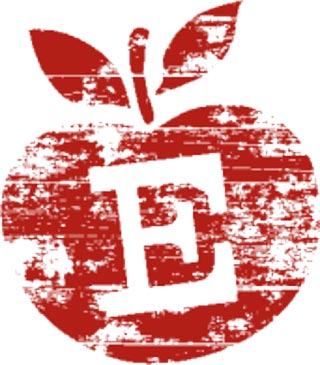Understanding the availability and statistics of crop production is crucial for several stakeholders, including farmers, policymakers, and consumers. This statistical data offers insights into the agricultural productivity, market dynamics, and seasonal trends important for decision-making and planning. By examining the harvest statistics of various crops, we can better appreciate the complexities and patterns that define the agricultural landscape. The following sections delve into specific data for veggies, fruit, and plant harvests in the United States.
Veggies and Fruit Harvest Statistics
This collection presents an overview of the harvesting timelines and production insights for a variety of fruits and vegetables grown in the United States. From the early-year harvesting of asparagus to the late-year cranberry season, the document sheds light on the regional and temporal aspects of agricultural production, highlighting the key states and conditions that influence the yield and market performance of these crops. Notably, it touches on the economic impact, regional dominance, and annual variations in production, providing a comprehensive snapshot of the current agricultural landscape.
- Asparagus: In the US, asparagus is typically harvested from late February to June, depending on the region.
- Blackberry: In 2017, U.S. blackberry production was valued at $31.1 million, with $5.4 million coming from fresh market sales and $25.7 million from processed sales. Oregon is the predominant geographic source of cultivated U.S. blackberry production, producing 20,100 tons on 6,300 acres.
- Black Raspberries: The harvest season for black raspberries in the US ranges from late summer to mid-fall, with California being one of the largest producing states.
- Vegetables: In terms of area harvested, the top three vegetables in the US are sweet corn, tomatoes, and snap beans, with tomatoes, romaine lettuce, and onions claiming the highest values.
- Strawberries: California produces roughly 90 percent of US-grown strawberries annually, with peak harvest spanning from early spring until fall.
- Peaches: The USDA forecasts for 2023 indicated that peach production would be 13 percent lower than in 2022 due to challenging weather conditions.
- Apples: In the 2022/23 crop year, almost 70% of fresh apples and 41% of processing apples were grown in Washington state.
- Blueberries: The blueberry season in the US runs from June to September, with the best quality fruit typically available in August.
- Plums: In the US, plums are generally harvested from July.
- Cherries: The cherry season in the US varies by variety, with some starting as early as May and others extending into August.
- Grapes: Grape harvest in the US typically begins in August and can last until October, depending on the variety and region.
- Pears: The pear harvest season in the US generally starts in August and extends through September.
- Cranberries: Cranberry harvest in the US usually occurs from mid-September to mid-November.
Plants Harvest Statistics
This analysis delves into the agricultural dynamics and cultural trends of three iconic symbols of American seasonal life: sunflowers, pumpkins, and Christmas trees. By exploring the production statistics and consumer behaviors associated with these crops in recent years, we gain insight into the significant shifts and sustained traditions that shape the agricultural landscape of the United States. From sunflower fields to festive pumpkin patches and the widespread adoption of Christmas trees, both artificial and farm-grown, this overview captures the essence of America’s connection to these beloved seasonal staples.
- Sunflowers: The US sunflower production in 2022 totaled 2.81 billion pounds, marking an increase of 48% from the 1.9 billion pounds in.
- Pumpkins: In 2022, Illinois maintained its leading position in pumpkin acreage, harvesting more than twice as many pumpkin acres as any of the other top states. Christmas Trees: Approximately 75 percent of US households displayed Christmas trees in 2021, with 84 percent being artificial and 16 percent farm-grown.
- Pumpkin patches are a popular destination in the US, especially during October. In 2021, farms with sales of $500,000 or more operated 40.9 percent of all farmland, which includes land used for U-pick pumpkin farms.
Citations:
– Farms and land in farms – 2021 summary February 2022. (n.d.). https://www.nass.usda.gov/Publications/Todays_Reports/reports/fnlo0222.pdf
– Cook, J. R. (2021, May 9). Grow Asparagus At Home With A Little Patience. Wide Open Country. https://www.wideopencountry.com/asparagus-season/
-Data, T. I. &. (2021, December 14). Raspberry harvest calendar in the United States – Tridge Blog – Medium. Medium. https://medium.com/tridge/raspberry-harvest-calendar-in-the-united-states-5cbe39122658
– United States Department of Agriculture & National Agricultural Statistics Service. (2022). Vegetables 2021 Summary. In USDA, National Agricultural Statistics Service. https://www.nass.usda.gov/Publications/Todays_Reports/reports/vegean22.pdf
– U.S. fresh strawberry production expands with newer varieties. (n.d.). https://www.ers.usda.gov/data-products/chart-gallery/gallery/chart-detail/?chartId=101156
– National Sunflower Association, Foreign Agricultural Service, & U.S. Department of Agriculture. (2022). 2022 U.S. Sunflower Crop Quality Report [Report]. https://www.sunflowernsa.com/uploads/38/2022sunflowercropqualityreport.pdf
– USDA ERS – Pumpkins: Background & Statistics. (n.d.-a). https://www.ers.usda.gov/newsroom/trending-topics/pumpkins-background-statistics/
– Mariano, J. (2022, November 8). 75 percent of U.S. households, will display a Christmas tree in 2021 — the American Christmas Tree Association. The American Christmas Tree Association. https://www.christmastreeassociation.org/press-releases/75-percent-of-us-households-or-94-million-homes-will-display-a-christmas-tree-in-2021-despite-supply-chain-and-shortage-challenges
– California continues to lead U.S. peach harvest. (n.d.). https://www.ers.usda.gov/data-products/chart-gallery/gallery/chart-detail/?chartId=107215
– USApple. (2022). USApple Industry Outlook 2022. In USApple. https://usapple.org/wp-content/uploads/2022/08/USAPPLE-INDUSTRYOUTLOOK-2022.pdf
– USDA, National Agricultural Statistics Service. (2020). Vegetables 2019 Summary. In USDA, National Agricultural Statistics Service. https://www.nass.usda.gov/Publications/Todays_Reports/reports/vegean20.pdf
– USDA/NASS 2023 State agriculture Overview for peaches. (n.d.). https://www.nass.usda.gov/Quick_Stats/Ag_Overview/stateOverview.php?state=PEACHES
– Kramer, J., Simnitt, S., Calvin, L., & USDA, Economic Research Service. (2021). Fruit and Tree Nuts outlook: September 2021. In USDA, Economic Research Service. https://www.ers.usda.gov/webdocs/outlooks/102267/fts-373.pdf?v=1443.3
– USDA ERS – ERS U.S. Apples: Slicing through the data. (n.d.). https://www.ers.usda.gov/amber-waves/2024/february/ers-u-s-apples-slicing-through-the-data/
– U.S. Apple Crop Facts. (n.d.). https://pickyourown.org/USapplecrop.htm
– Cusick, D. (2024, February 20). How Climate Change Hurt this Year’s Apple Harvest. Scientific American. https://www.scientificamerican.com/article/how-climate-change-hurt-this-years-apple-harvest/
– Blackberries. (n.d.). Copyright 2024 Agricultural Marketing Resource Center. All Rights Reserved. https://www.agmrc.org/commodities-products/fruits/blackberries

Be the first to leave a comment!